Insurer Not Entitled to Summary Judgment Based Upon Vandalism Exclusion
June 18, 2014 —
Tred R. Eyerly – Insurance Law HawaiiThe court denied the insurer's motion for summary judgment on plaintiff's breach of contract claim because there was a disputed issue of fact regarding the applicability of the vandalism exclusion. Poole v. Untied Servs. Auto. Assn., 2014 N.Y. Misc. LEXIS 2394 (N.Y. Sup. Ct. May 16, 2014).
The plaintiff rented a residence to tenants. The tenants performed repairs to the residence which resulted in damage in excess of $126,000. The tenants vacated the residence. The plaintiff submitted a claim to USAA for benefits under her homeowners' policy.
USAA denied coverage based upon exclusions for damage caused by, among other things, faulty workmanship, renovation and remodeling. Plaintiff sued and USAA moved for summary judgment.
Read the court decisionRead the full story...Reprinted courtesy of
Tred R. Eyerly, Insurance Law HawaiiMr. Eyerly may be contacted at
te@hawaiilawyer.com
20 Years of BHA at West Coast Casualty's CD Seminar: Chronicling BHA's Innovative Exhibits
May 03, 2018 —
Beverley BevenFlorez-CDJ STAFFThe Bert L. Howe & Associates, Inc., (BHA) exhibit has been a fixture at West Coast Casualty's Construction Defect Seminar since the mid-1990's. Through the years, BHA has updated their display, but no matter what year, you could count on the BHA exhibit to provide a not-to-be-missed experience.
2008-BHA's sleek, rear projection display includes a screen that promotes the firm's capabilities that can be seen throughout the exhibit hall. This would be one of many innovations BHA has brought to the West Coast Casualty seminar.
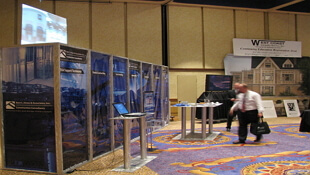
2009-With the success of the rear screen projection, BHA adds additional monitors to provide attendees with more information about BHA.
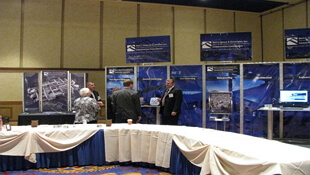
2010-BHA adds an interpretive professional development exhibit targeted to Building Envelope issues allowing adjusters and other non-construction professionals hands on access to the systems and components at the heart of many related such claims.


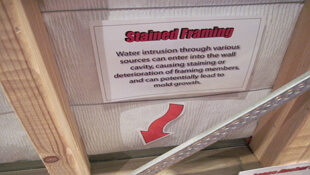
2011-BHA's Swing for Charity challenge is born.

2012-Always innovating, BHA expands its rear projection and professional development offerings to West Coast attendees.

2013-BHA showcases additional capabilities with a twenty-four foot, custom, convex, immersive video experience.

2014-BHA adds an iPhone display to give a hands-on demonstration of their data collection methods.

2015-BHA's twenty-four foot , custom, convex, immersive video experience was elevated with two additional rear projection screens, reflecting BHA's newest capabilities and services.

2016-BHA dazzles attendees with their new exhibit comprised of more than 15 integrated, high definition, LCD displays. iPads are stationed on tables to conveniently demonstrate BHA's data collection processes.

2017-BHA's Swing for Charity Golf Challenge raised $2,225.00 for the National Coalition for Homeless Veterans and $1,900 for Final Salute.
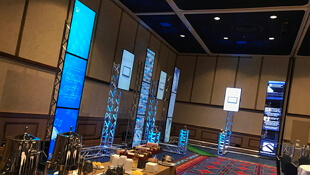
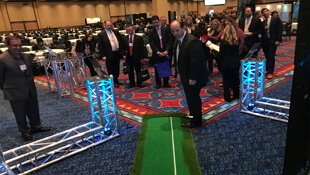
Read the court decisionRead the full story...Reprinted courtesy of
Puerto Rico Grid Restoration Plagued by Historic Problems, New Challenges
November 08, 2017 —
Pam Radtke Russell - Engineering News-RecordWhile the federal government is helping to restore power to Puerto Rico as fast as it can, that work is being made more difficult due to the dilapidated, pre-Hurricane Maria state of the grid and because long-term, post-disaster power restoration is typically not the federal government's mission.
Read the court decisionRead the full story...Reprinted courtesy of
Pam Radtke Russell, ENRMs. Russell may be contacted at
Russellp@bnpmedia.com
Insurer Must Defend and Indemnify Construction Defect Claims Under Iowa Law
February 23, 2017 —
Tred R. Eyerly – Insurance Law HawaiiApplying Iowa law, the federal district court found that the insurer had to defend and indemnify construction defect claims for damage to property caused by the insured's subcontractors. Van Der Weide v. Cincinnati Ins., 2017 U.S. Dist. LEXIS 4469 (N.D. Iowa Jan. 12, 2017).
Van Der Weide contracted with Bouma & Company, Inc. to construct a house in 1996. Before construction began, Bouma purchased a CGL policy and a separate umbrella policy from Cincinnati, which were in effect from January 30, 1996 to January 30, 1999.
Bouma used various subcontractors to build the home, including Elkato Masonry, which did the brick veneer and masonry work. The house was completed in February 1998 and Van Der Weide moved in during August 1998.
Read the court decisionRead the full story...Reprinted courtesy of
Tred R. Eyerly, Insurance Law HawaiiMr. Eyerly may be contacted at
te@hawaiilawyer.com
Health Care Construction Requires Compassion, Attention to Detail and Flexibility
July 01, 2019 —
Coker Barton - Construction ExecutiveWhen it comes to renovating and expanding hospitals, there is one principle that everyone can agree on: patients, family and hospital staff must be placed at the forefront of every stage of the job, ultimately dictating the project’s timeline. For a health care project to be a success, a general contractor needs to have industry-specific experience, must emphasize communication and scheduling and—most importantly—have a passion for the industry.
Capably and safely work in a health care environment
Health care requires a level of detail and understanding of the industry that is not found in other construction sectors. Builders must focus on infection control and interim life safety measures to protect patients, visitors and staff. There is accountability involved that goes beyond completing a project right on schedule.
For example, the expansion of The Studer Family Children’s Hospital at Sacred Heart in Pensacola, Fla., included a new 175,000-square-foot tower in addition to building out space above the Neonatal Intensive Care Unit. Anytime the contractor is building next to or over patients, especially those who are most vulnerable, it is on alert. It sets up containment areas, which help maintain the negative pressure in the construction area by pulling air in versus blowing dirty air out, as well as keep dust and other contaminants inside the construction area. There is no room for mistakes, which is why these techniques require more training and experience to properly execute.
Reprinted courtesy of
Coker Barton, Construction Executive, a publication of Associated Builders and Contractors. All rights reserved.
Read the court decisionRead the full story...Reprinted courtesy of
Wisconsin Supreme Court Holds Fire Damage Resulted from Single Occurrence
November 21, 2018 —
Brian Margolies - TLSS Insurance Law BlogIn its recent decision in Secura Ins. v. Lyme St. Croix Forest Co., LLC 2018 WI 103 (Oct. 30, 2018), the Wisconsin Supreme Court had occasion to consider whether a forest fire that caused damage to several homes and properties should be considered a single or multiple occurrences.
Secura insured Lyme St. Croix Forest Company under a general liability policy. Of relevance was the policy’s $500,000 sublimit of coverage for property damage due to fire arising from logging or lumbering operations, subject to a $2 million general policy aggregate limit. Lyme St. Croix sought coverage under the policy for a fire that resulted from its logging equipment. The fire lasted for three days, burning nearly 7,500 acres and causing damage to numerous homes and businesses.
Read the court decisionRead the full story...Reprinted courtesy of
Brian Margolies, Traub Lieberman Straus & Shrewsberry LLPMr. Margolies may be contacted at
bmargolies@tlsslaw.com
Prompt Payment More Likely on Residential Construction Jobs Than Commercial or Public Jobs
May 02, 2022 —
LevelsetNEW ORLEANS, May 02, 2022 (GLOBE NEWSWIRE) -- In construction, no line of work guarantees prompt and in-full payments, but contractors working on residential jobs say their rate of prompt payment is significantly better than commercial or public jobs, according to the
2022 Levelset Cash Flow and Payment Report. However, the report revealed that residential construction jobs require increased communication to improve the chance of prompt payment when compared to commercial or public jobs.
Contractors working on residential projects are more than twice as likely as those working on public projects to report getting paid within 30 days, with residential construction contractors saying they are paid in 30 days or less 48% of the time and public construction contractors saying that only happens 21% of the time.
Significantly slow payments of 60 days or more are three times more likely on public construction projects than on residential construction projects, according to the survey participants. Residential contractors say it happens rarely, just 6% of the time, while public project contractors say it happens nearly one out of five times (18%).
For more information about the report and a detailed summary of findings, please visit: www.levelset.com/survey
About Levelset
Levelset's mission is to empower contractors to always get what they earn. Levelset's products help millions in the construction industry each year to make payment paperwork and compliance easier, get cash faster, monitor the risk on jobs and contractors, and better understand payment processes and rules. The results are faster payments, access to capital, and fewer surprises. Founded in 2012, Levelset is based in New Orleans, Louisiana, with offices in Austin, Texas, and Cairo, Egypt, and is owned and operated by Procore Technologies, Inc. For more information, visit www.levelset.com.
Read the court decisionRead the full story...Reprinted courtesy of
Ahlers & Cressman’s Top 10 Construction Industry Contract Provisions
July 02, 2014 —
Beverley BevenFlorez-CDJ STAFFJames R. Lynch of Ahlers & Cressman, PLLC, has published the first two parts of the four-part “Top 10 Construction Contract Provisions” series: “As a powerful mechanism to control contract risk, increase predictability, and reduce the cost and complexity of potential disputes, we frequently recommend that our clients’ contracts include a mutual waiver of consequential damages.”
The first part “explains the significance of such a clause and the risk a contractor assumes without it,” while the second part discusses “the various categories of damages flowing from a breach of contract and conclude[s] with examples of how parties can limit these damages to reflect their agreed allocation of risk.”
Read the full story, Part 1...
Read the full story, Part 2... Read the court decisionRead the full story...Reprinted courtesy of




































































